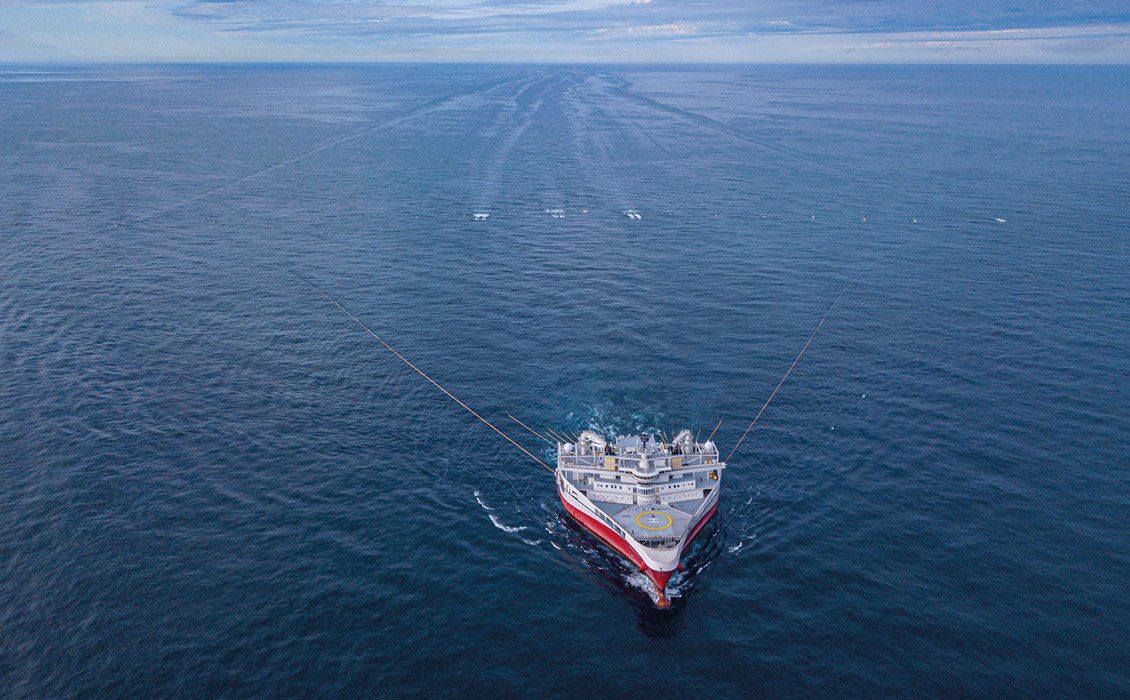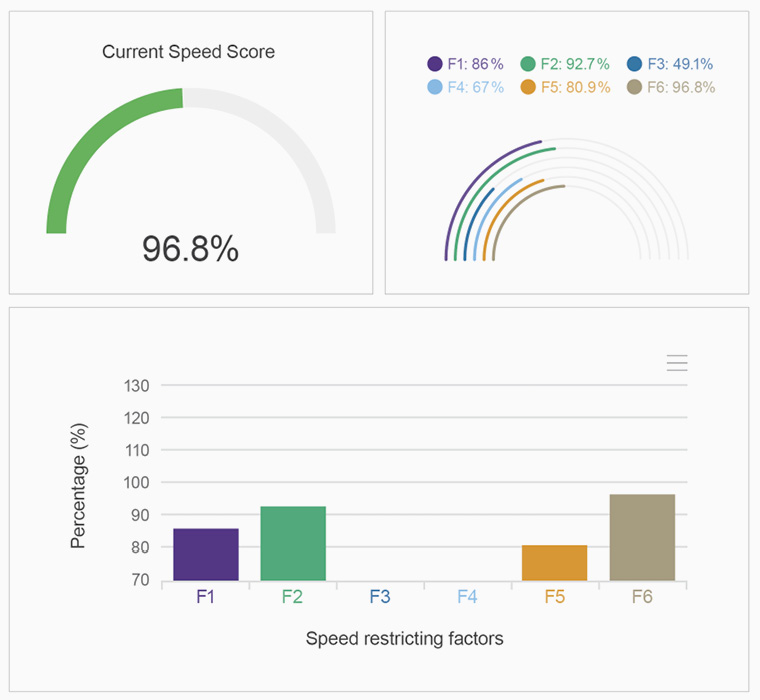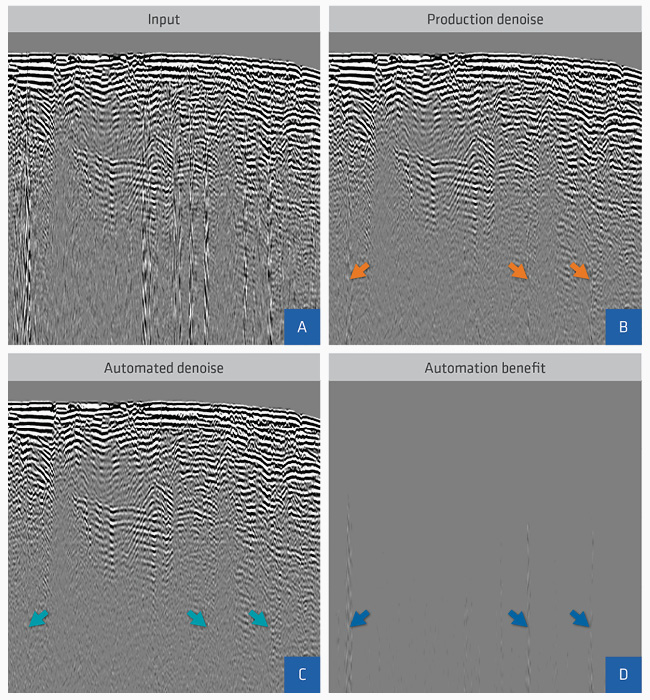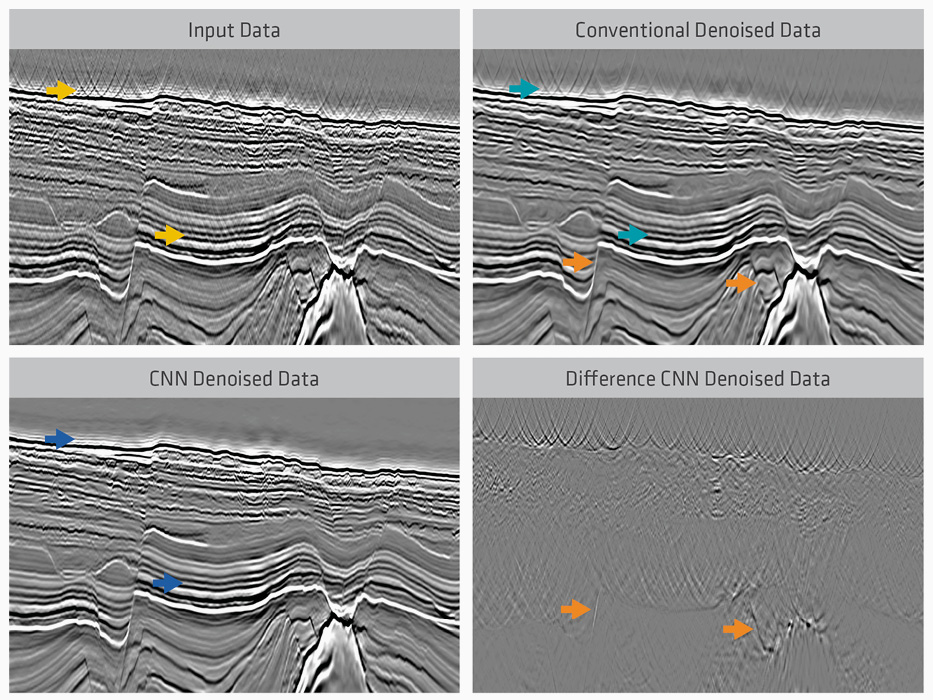A recent Gartner seminar made the bold prediction that “in the near-term AI will not replace humans, but humans that use AI will replace those that do not”. What the presenter was trying to convey is that the targeted use of artificial intelligence and machine learning can result in significant operational improvements that in turn will result in tangible competitive advantages. This is especially true in areas where AI is used for predictive analytics to improve the quality of decision-making.
The process of safely acquiring and imaging marine seismic datasets is a major enterprise and requires a significant amount of human capital to operate seismic vessels and to image and characterize the many terabytes of seismic data collected each day. Many of the processes involved are implicitly repetitive and the use of AI has the potential to improve the efficiency of such processes.
Having recognized the potential of using AI, PGS has embarked on several digitalization transformation projects across its different product lines and we are happy to share some of our initial learnings and observations in this article.
The application of machine learning within the context of fully integrated acquisition and imaging operations has allowed us to assess the impact of AI processes along the entire seismic life cycle, from the point of data collection to the delivery of seismic products to end users.
A decision was made early on to focus any AI development and application on repetitive processes that were seen to have the biggest impact on project execution and turnaround time, and on minimizing delivery risk and costs. One focus area was the optimization of vessel speed without compromising overall data quality. Specific focus was also given to the early identification of hardware failures before these could result in survey downtime, and the augmentation of human decision-making in somewhat predictable processes; reducing human exposure to unnecessary operational risk. Finally, some of the AI development work focused on simplifying workflow structures and reducing manual processes such as the QC of repetitive parameterization of seismic processing algorithms.
Improving Project Performance Through Smarter Vessel Operations
There are many factors that affect the speed at which a marine seismic vessel operates during a survey and most of them are routinely measured. To understand which of these factors are most critical at a given time, PGS teamed up with Cognite to use their Cognite Data Fusion™ analytics capabilities to analyze the available data. When designing the project, PGS saw an opportunity to combine the many factors that influence a vessel’s optimal operating speed into a single, easily accessible and understandable tool that could be used by the operations management team.
Reports combining vessel sensor and operational data have provided new insight into the details of vessel production performance, and dashboards are used in onshore project planning and execution. Figure 1 is the near-real-time view of the vessel speed management dashboard showing machine learning predictions of the factors that are currently restricting the vessel speed. These include, among others, recorded noise levels, forces experienced by the equipment, and time between shot points.
The systematic analysis of the speed metrics and better understanding of the recorded operational data has also enabled other beneficial avenues to be explored. The monitoring and modeling of performance shows promise for optimizing maintenance schedules, while processing text from safety reports has already identified trends allowing changes to be implemented that we hope will improve the HSEQ performance of the offshore crews. Informed preventative maintenance to avoid costly port calls is now a realistic target and will save millions of dollars each year.
Data Processing with Deep Learning is Real Automation
There are many repetitive processes in seismic processing that present opportunities for AI to enhance productivity. Parameter testing phases involve the geophysicist drawing upon their experience to evaluate the success of many tens of processes that almost always employ data visualization. Convolutional neural networks (CNNs) are one example of AI that can be trained to perform similar analysis but in an accelerated timeframe. Removing noise from seismic data is an important processing step and requires testing and QC. Farmani and Pedersen (2020) developed an automated noise removal workflow, incorporating machine learning into a framework with conventional methods, saving significant time and effort whilst delivering better results.
The neural network can highgrade the denoise performance of the processing step as shown in Figure 2. Panel B shows a manually parameterized, single pass denoise result which is fed into the AI framework. The results shown in Panel C demonstrate the high grading of the result following classification and automatic reparameterization and rerunning (where required); the difference of which is shown in Panel D, indicating that the machine learning approach has worked very well.
In another machine learning application, we focused on migrated images that are often contaminated by migration swings; a noise resulting from uneven subsurface illumination and propagation through complex media. As the noise has similar characteristics to the underlying seismic data, it is difficult to create filters that remove the noise without damaging the seismic data.
In the neural network-based approach developed by Klochikhina et al. (2020), training data is created using noisy images as an input to the network and clean images as an output. Figure 3 shows the results of an application of the trained network, for a deepwater data example from offshore Brazil. Yellow arrows in the upper left panel highlight the unwanted noise, whilst blue arrows in the bottom panel show how the CNN removes the noise that is still present when a conventional approach is used (turquoise arrows in the upper right panel). Orange arrows in the upper right panel also indicate locations that have lost detail because of the conventional approach.
AI Beyond Vessels and Seismic Data
There are a wide range of opportunities in other parts of the seismic business where the use of AI holds great promise. Two such opportunities are well log prediction and fraud detection.
Well logs are physical measurements collected from boreholes that can provide an accurate view of the subsurface. As robust as they are, once this raw data is collected, it must be processed by specialists (a petrophysicist, and/or a rock physicist) to derive a set of conditioned logs. This is a lengthy process. Ruiz et al. (2021) show that machine learning with a rock physics library (PGS rockAVO) can rapidly predict conditioned properties such as porosity from measured logs; significantly reducing turnaround to the order of an hour for training and prediction.
When it comes to fraud in commercial transactions it is estimated that around 5% of global revenues are lost each year to fraud schemes with duplicitous invoicing being a commonly used tactic. The problem for auditing financial transactions for the purpose of fraud detection is that the number of legitimate invoices received by a company can be vast. Manual inspections rely on a small sample for analysis, which reduces the chances of discovering fraud. A successful AI application in our company now uses attributes from invoices and suppliers, building a set of models using clustering techniques, similarity measures, and statistical analysis. These are combined with expert rules to identify invoices that warrant further inspection by an Audit Team.
Early Learnings
As described in this article, machine learning as part of AI solutions can be successfully used in a variety of applications in the seismic industry, but success is not just based on the quality of the algorithms alone. When it comes to making machine learning and AI applications a success, the following should be considered. Ensure resources are available, so prioritize developments with a good business case, build cross-functional teams including domain experts and data scientists, for continual progress, work in iterations and the ease of commercialization may vary depending on platform; legacy environments can be more challenging when it comes to deploying new AI solutions.
It is still early days, but as we gain more experience, we expect to increase the use of AI as part of the continuing trend for more automation in all parts of our industry.
References
- Farmani, B. and Pedersen, M. 2020. Application of a convolutional neural network to classification of swell noise attenuation. 90th SEG Annual Meeting, Extended Abstracts, pp.2868–2871.
- Klochikhina, E., Crawley, S., Frolov, S., Chemingui, N. and Martin, T. 2020. Leveraging deep learning for seismic image denoising. First Break, 38(7), pp.41–48.
- Ruiz, R., Roubickova, A., Reiser, C. and Banglawala, N. 2021. Data mining and machine learning for porosity, saturation, and shear velocity prediction: recent experience and results. First Break, 39(7), pp.71–76.








